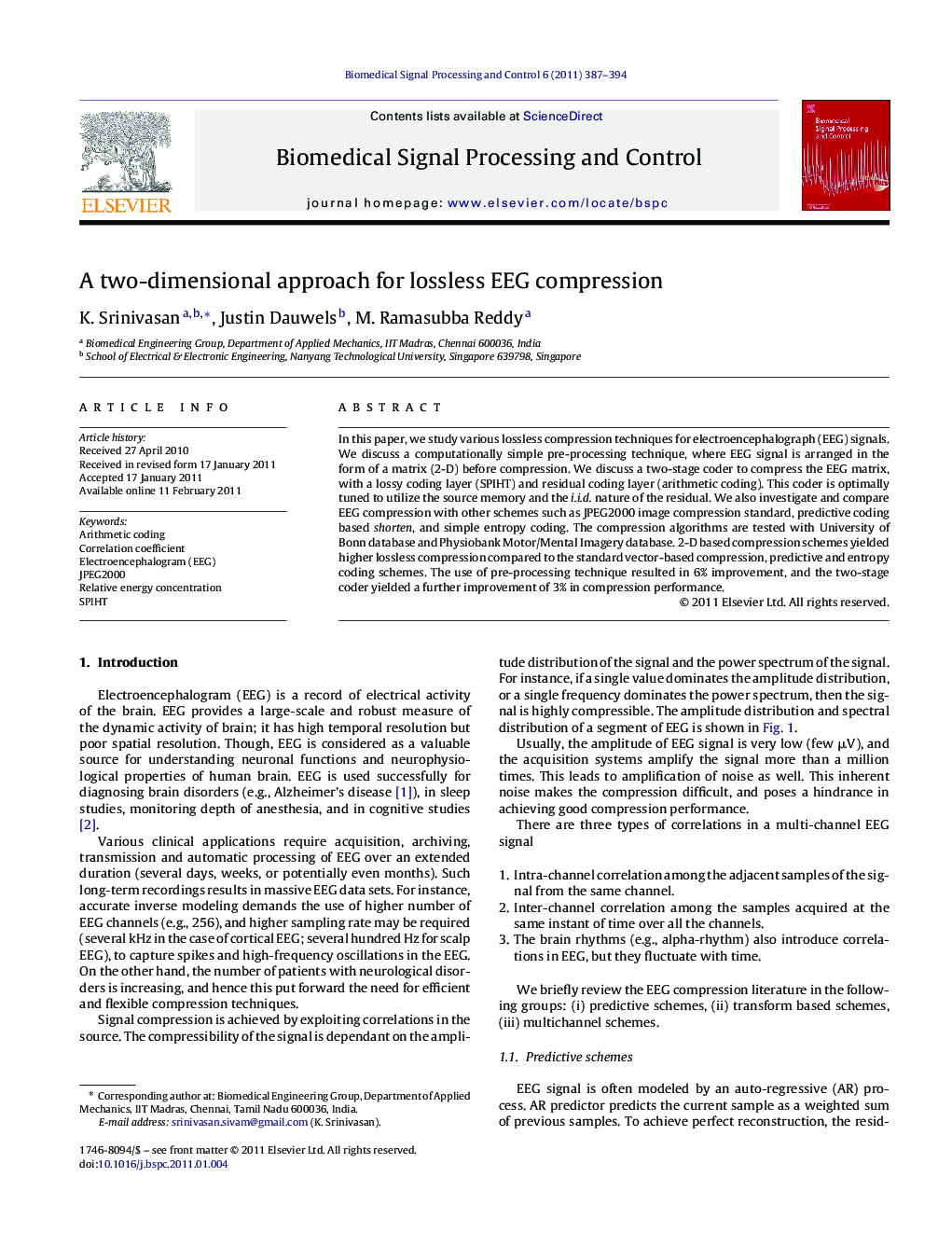| Article ID | Journal | Published Year | Pages | File Type |
|---|---|---|---|---|
| 558047 | Biomedical Signal Processing and Control | 2011 | 8 Pages |
In this paper, we study various lossless compression techniques for electroencephalograph (EEG) signals. We discuss a computationally simple pre-processing technique, where EEG signal is arranged in the form of a matrix (2-D) before compression. We discuss a two-stage coder to compress the EEG matrix, with a lossy coding layer (SPIHT) and residual coding layer (arithmetic coding). This coder is optimally tuned to utilize the source memory and the i.i.d. nature of the residual. We also investigate and compare EEG compression with other schemes such as JPEG2000 image compression standard, predictive coding based shorten, and simple entropy coding. The compression algorithms are tested with University of Bonn database and Physiobank Motor/Mental Imagery database. 2-D based compression schemes yielded higher lossless compression compared to the standard vector-based compression, predictive and entropy coding schemes. The use of pre-processing technique resulted in 6% improvement, and the two-stage coder yielded a further improvement of 3% in compression performance.
